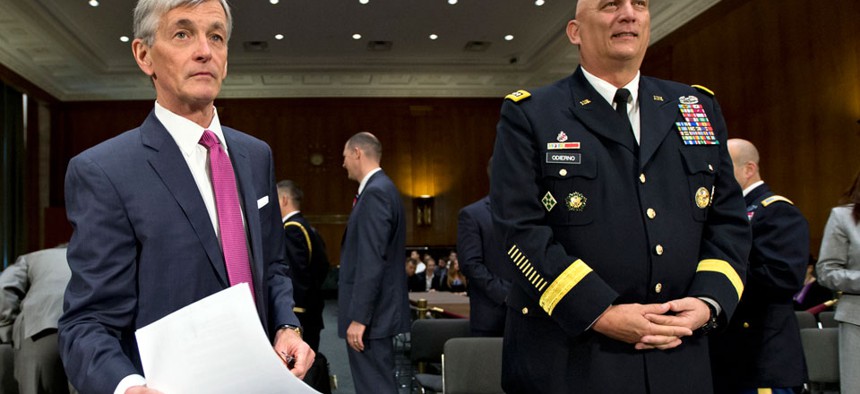Good News: Army Chiefs Plan ‘Smart’ Civilian Workforce Reduction

Army Secretary John McHugh, left, and Army Chief of Staff Gen. Ray Odierno testified on Capitol Hill last year. J. Scott Applewhite/AP file photo
The Bad News: Possible RIFs.
Secretary of the Army John McHugh and Army Chief of Staff Gen. Ray Odierno told a hearing of the House Armed Services Committee today that the service’s civilian workforce will drop to 263,000 at the end of fiscal 2015, a drop of 22,000 from its Afghanistan and Iraq war high of 285,000.
McHugh and Odierno said “we will do it smartly, focusing on preserving the most important capabilities. This requires a broader strategy that links functions, funding and manpower to produce the desired civilian workforce of the future—one that fully supports the generation of trained and ready combat units.”
They also plan to fire up “all available workforce shaping tools such as Voluntary Early Retirement Authority and Voluntary Separation Incentive Pay to reduce turbulence in our civilian workforce.”
So far so good….we all hate dumb, willy-nilly workforce reductions done without shaping tools.
Here’s the bad news….
“We will target the skills we need to retain, and voluntarily separate those with skills no longer needed. If we cannot achieve our Army Civilian reduction goals by voluntary means, we will use Reduction in Force as a last resort,” McHugh and Odierno said.
Get the Nextgov iPhone app to keep up with government technology news.
NEXT STORY: Rand Paul Touts Role in NSA Phone Spying Reforms



